The end of summer will not only bring rain; it also starts with white or root grubs in your garden. Did you notice the yellowing of leaves and drying up of plants in your garden? This may be due to white grubs/root grubs infestation. Have you ever tried to control grubs organically? I am here to talk about the root grub infestation and its control organically in a better and cheaper way.
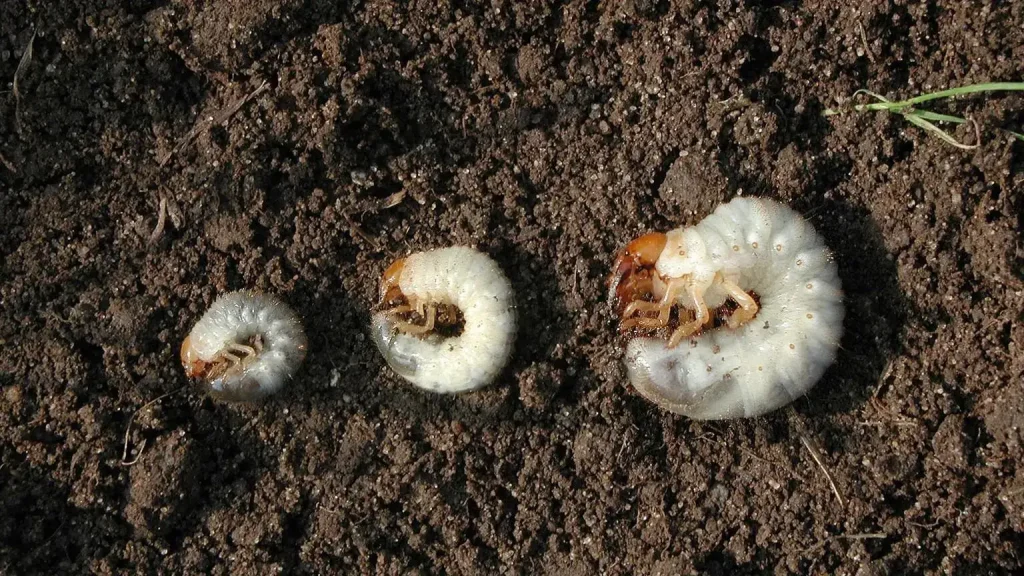
What are root grubs?
Grubs are the larvae of beetles such as Japanese beetle, green June beetles, May or June beetles, chafers, Oriental beetles, and weevils such as black vine weevil. Grubs are generally creamy-coloured with brown heads. Most beetle grubs have legs. Scarab beetle grubs (Japanese, May, June, Oriental, etc.) have a distinctive C-shape when found in the soil.
How do root grubs cause damage to the plants?
When we see the damaging stage of the root grubs they are nothing but larvae.
Beetles are thought to lay eggs in manure heaps. When farmyard manure is used as fertilizer it may be a source of eggs and larvae spread into fields. Larvae live in the turf-root zone, where they feed on roots and decaying organic matter.
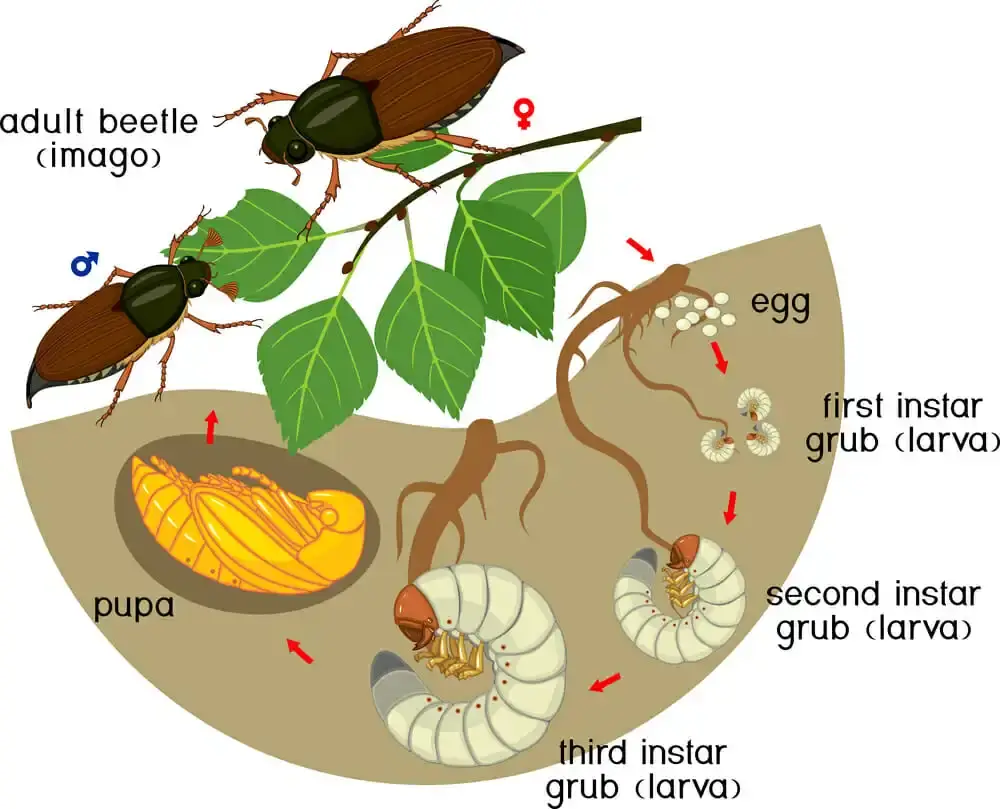
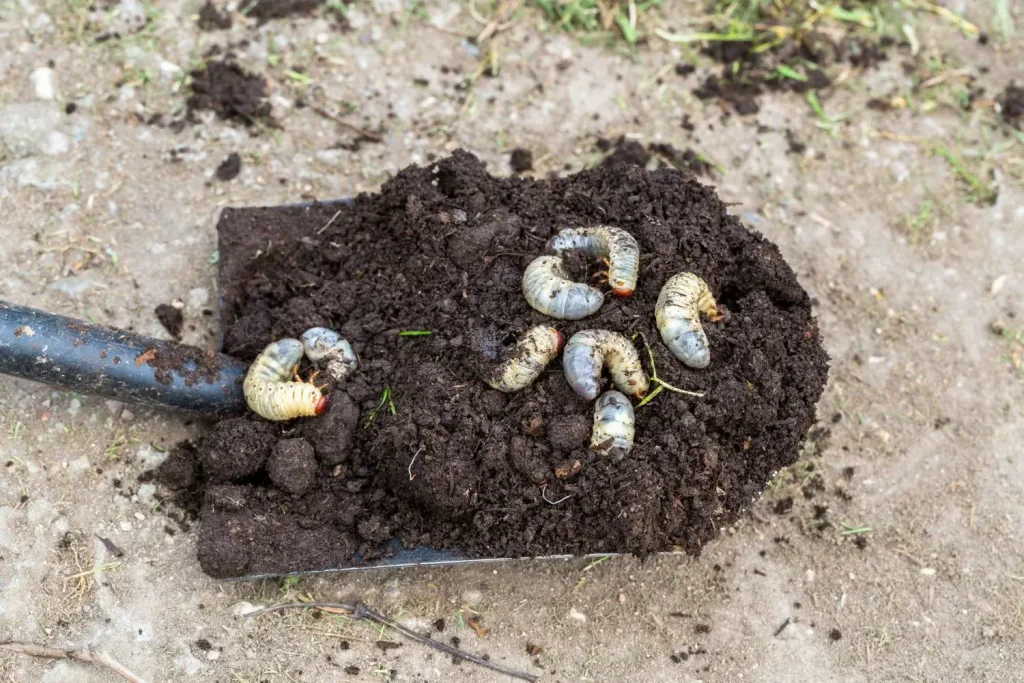
What does grub damage look like on plants?
Some research showed that in Bhutan the major pest for potatoes is grubs which drastically damaged the crop by grubs feeding on roots, causing plants to dry up.
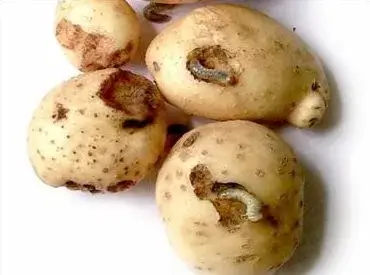
When we see the arecanut root grub infestation, there will be a reduction in stem width, size of the crown, yellowing of leaves, tapering of palms, and a heavy reduction in yield or no yield are characteristic symptoms in the advanced stage of damage. In severely infested plots, 30-40 grubs can be seen in the base of a single palm.
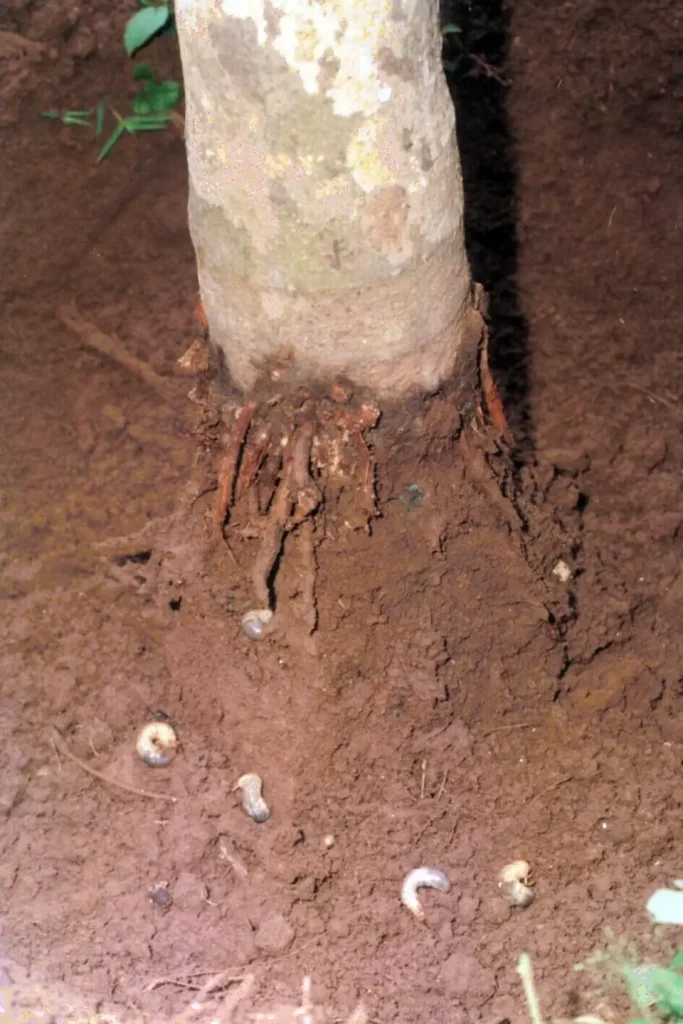
How to Get Rid of Grubs Organically?
To get rid of grubs there are many natural ways, like using neem oil or inviting some birds to pick out the grubs. But these methods are much more effective at getting rid of. Here I can recommend Criyagen Metarhizium for the root grubs that get rid of organically in your fields.
Read more about other biopesticides in our blogs.
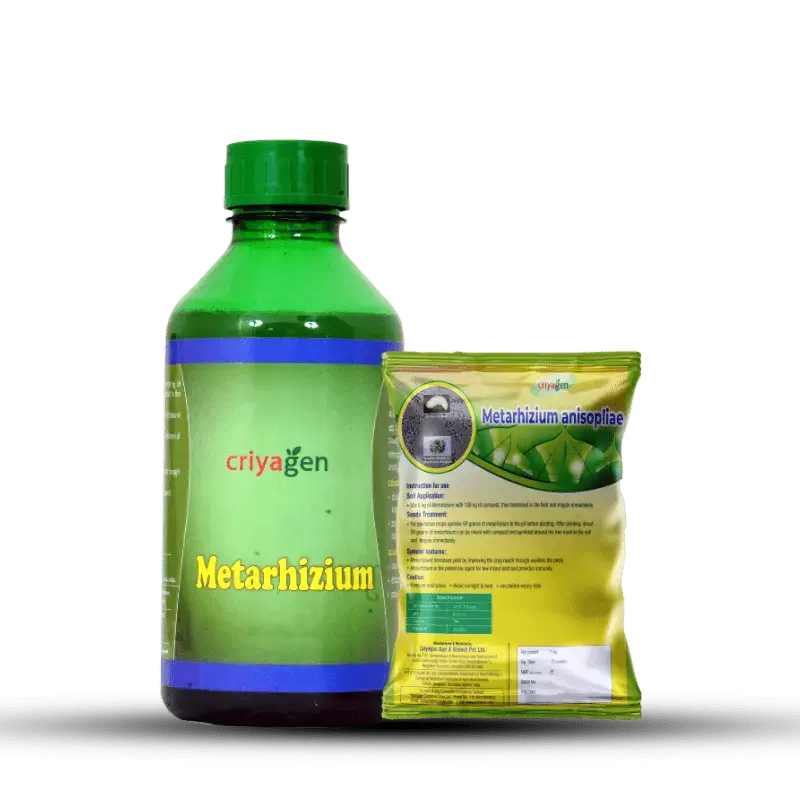
What is Criyagen Metarhizium?
Metarhizium is a naturally occurring entomopathogenic fungi that act as a bio-control agent against arthropods. It is effective against pests like root weevils, plant hoppers, Japanese beetles, black vine weevils, spittlebugs and white grubs.
How does it work to control grubs organically?
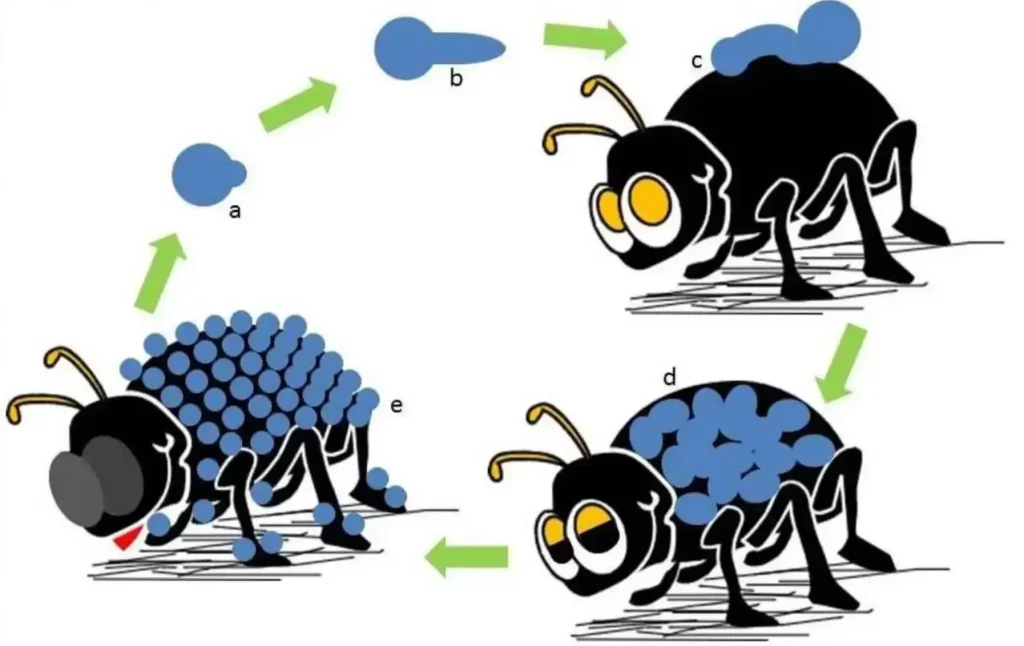
Let’s take this image as a reference for your easy understanding be an entomologist for a minute.
Let’s see the infection of entomopathogenic fungi and how it kills grubs. Firstly fungal spore (a) in the formulation (criyagen metarhizium) produces a germ tube (b).
It penetrates (c) the host body through its exoskeleton. Upon successful entry into the host body, it divides and produces tube bodies and occupies the host tissues (d). Lastly, it kills the grub and fungus emerges from the dead host and produces more conidial spores (e).
Interesting right? Then give Criyagen Metarhizium to your plants. But confused about how to use it and the method of application.
Let’s have a look:
When you go for drip irrigation mix 1 kg of Criyagen Metarhizium in 100 liters of water.
For soil application mix 5 kg Criyagen Metarhizium in 100 kg manure.
In conclusion, organic control of root grubs in the garden can be effectively achieved through the use of Criyagen Metarhizium. This natural solution offers an environmentally friendly alternative to chemical pesticides, targeting a variety of harmful pests, including root weevils, japanese beetles, and white grubs. By incorporating this biopesticide into gardening practices, growers can reduce the damaging effects of root grubs while promoting a healthier and more sustainable ecosystem for their plants.
Get a free consultation from AgriApp Agronomy Services.
Call now at +91 9108047688